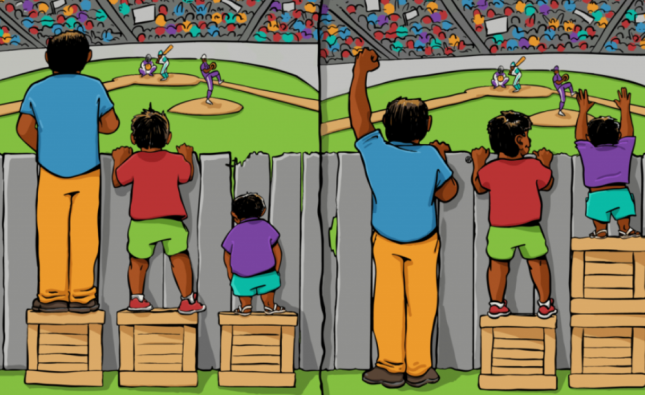
Love knows no bounds and the fight for equality has been a long one. In America, the journey towards marriage equality started with Stonewall Riots in 1969 and continued all the way to SCOTUS’ historic decision in 2015. Along this timeline, there have been victories, struggles, heartbreaks and triumphs that have shaped society as we know it today. In this post, we’ll take you on a journey through time to explore how far America has come when it comes to recognizing love as love – regardless of gender orientation. Get ready to witness history unfold before your eyes!
The History of Marriage Equality in America
The modern fight for marriage equality in America can be traced back to the Stonewall Riots of 1969. The Stonewall Inn was a popular gay bar in New York City that was raided by police on June 28, 1969. The raid sparked a riot among the bar’s patrons and led to six days of protests and demonstrations throughout the city.
The Stonewall Riots are widely considered to be the beginning of the modern gay rights movement in America. In the years following the riots, numerous grassroots organizations were formed to advocate for the rights of lesbian, gay, bisexual, and transgender (LGBT) people. These organizations worked to raise awareness of LGBT issues and fight discrimination through education and activism.
One of the first major victories for marriage equality came in 1973, when the American Psychiatric Association removed homosexuality from its list of mental disorders. This decision helped to break down stereotypes and misconceptions about LGBT people and paved the way for increased acceptance of homosexuality in society.
In 1996, President Bill Clinton signed into law the Defense of Marriage Act (DOMA), which defined marriage as a legal union between one man and one woman. However,DOMA was struck down by the US Supreme Court in 2013 as unconstitutional. This decision paved the way for same-sex couples to begin marrying nationwide.
In 2015, another major milestone was reached when the US Supreme Court legalized same-sex marriage nationwide in the landmark case Obergefell v. Hodges. This ruling finally guaranteed
The Fight for Marriage Equality
The modern fight for marriage equality in America began at the Stonewall Inn in 1969, when members of the LGBTQ community rioted after a police raid on the popular New York City bar. The uprising marked a turning point in the gay rights movement, which had until then been largely focused on individual rights and assimilation into mainstream society.
Following the Stonewall riots, gay rights organizations began to form across the country, and the fight for marriage equality became a central tenet of the movement. In 1973, Maryland became the first state to ban same-sex marriage, and over the next two decades, more than 30 states would follow suit.
In 1996, Congress passed the Defense of Marriage Act (DOMA), which denied federal benefits to same-sex couples and allowed states to refuse to recognize same-sex marriages performed in other states. The law was widely seen as a major setback for marriage equality advocates, but they continued to push forward.
In 2003, Massachusetts became the first state to legalize same-sex marriage; however, implementation of the law was delayed until 2004 due to opposition from conservatives. Over the next decade, a handful of other states would legalize same-sex marriage while many others passed constitutional amendments banning it.
The fight for nationwide marriage equality came to a head in 2015 with Obergefell v. Hodges, a landmark Supreme Court case that overturned all state bans on same-sex marriage and guaranteed nationwide recognition of such unions. The ruling
The Supreme Court Ruling on Marriage Equality
On June 26, 2015, the Supreme Court of the United States ruled in favor of marriage equality, making same-sex marriage legal in all 50 states. This ruling was a major victory for the LGBTQIA+ community and their allies, as it finally gave them full legal recognition and protection under the law.
The road to this historic decision was long and hard-fought. It began with the Stonewall riots in 1969, when members of the LGBTQIA+ community fought back against police brutality and discrimination. This event sparked a nationwide movement for equality that gained traction throughout the 1970s and 1980s. In 1993, Hawaii came close to legalizing same-sex marriage, but the issue was ultimately decided by voters in a referendum.
In 1996, Congress passed the Defense of Marriage Act (DOMA), which defined marriage as between one man and one woman for federal purposes. This law was challenged in court numerous times, but it wasn’t until 2013 that it was finally struck down by the Supreme Court. This paved the way for individual states to begin legalizing same-sex marriage on their own.
By 2015, 37 states had legalized same-sex marriage, either through legislation or court rulings. When the Supreme Court issued its ruling on Obergefell v. Hodges, they effectively made same-sex marriage legal nationwide. This was a momentous day not just for members of the LGBTQIA+ community, but for all Americans who believe in equality and justice for all.
The Impact of Marriage Equality
Since the Stonewall riots in 1969, the fight for marriage equality has been a long and arduous one. While there have been many setbacks, there have also been significant milestones along the way. In 2015, the US Supreme Court finally ruled in favor of nationwide marriage equality, cementing this fundamental civil right into law.
The impact of this ruling cannot be understated. For same-sex couples across America, it meant that they were finally treated equally under the law. They could now enjoy all of the same benefits and responsibilities that come with marriage, including joint tax filing, spousal health insurance coverage, and survivor benefits.
This ruling also had a ripple effect throughout society. It helped to break down many of the barriers that had been preventing same-sex couples from fully participating in society. It also sent a strong message that discrimination against LGBT people is wrong and that everyone deserves to be treated fairly and with respect.
Conclusion
The timeline of marriage equality in America shows us just how far the movement has come since Stonewall. From protests and civil disobedience to landmark Supreme Court cases that recognized same-sex couples’ right to marry, it is clear that progress can happen when we stand up for what’s right. While there is still work left to do, let us be inspired by what has been achieved so far and stay united in our efforts towards a more inclusive society where everyone can enjoy the freedom to love who they want without fear of persecution or discrimination.










